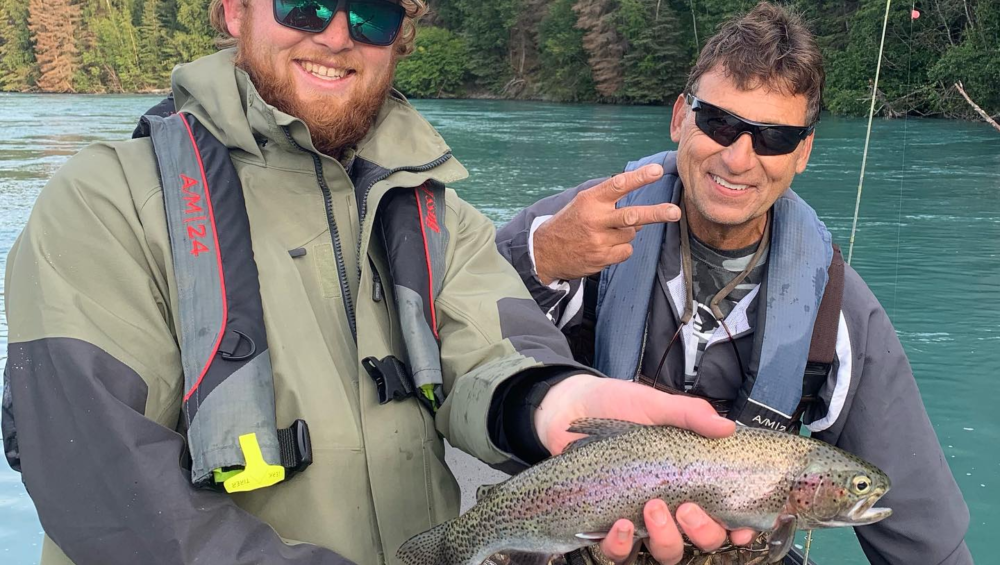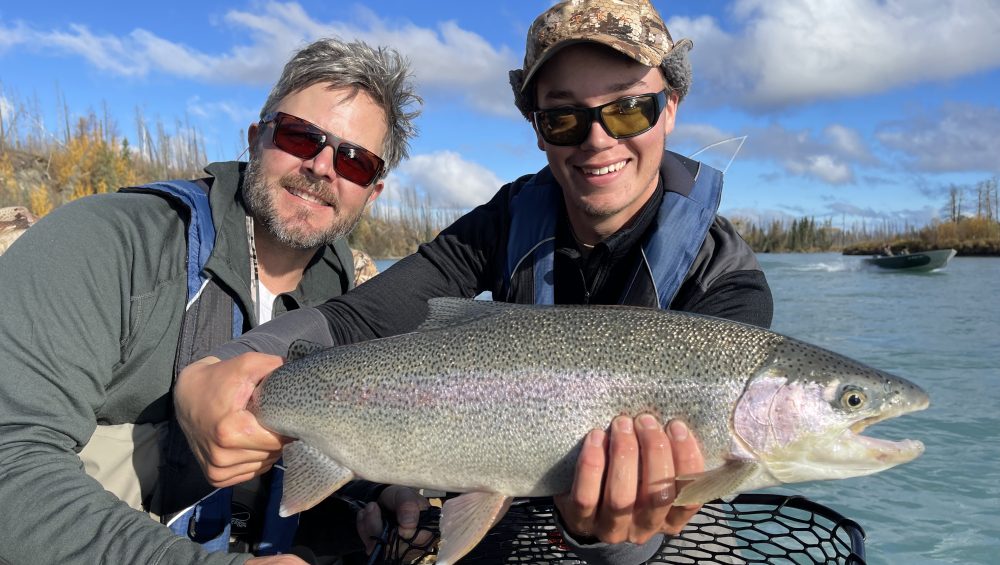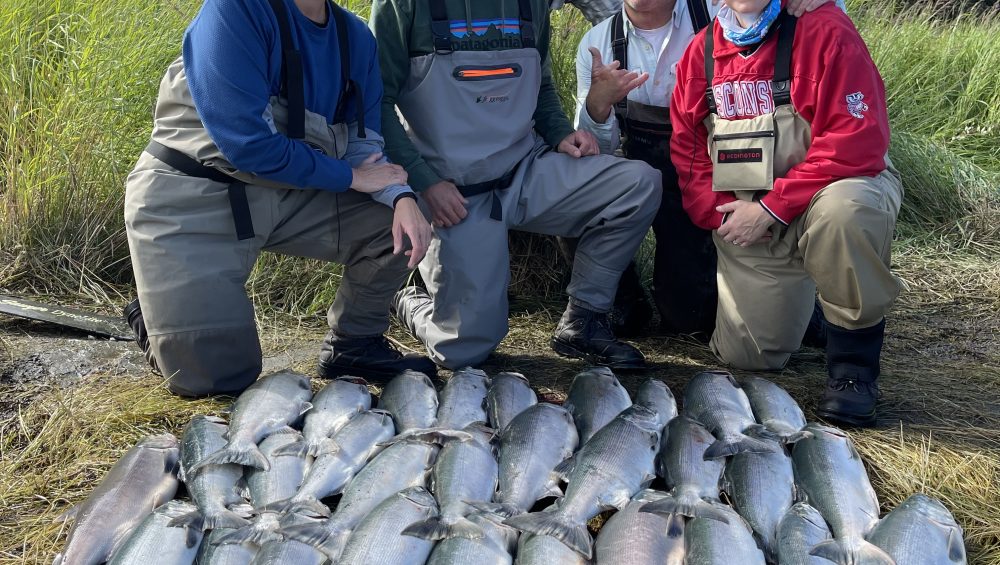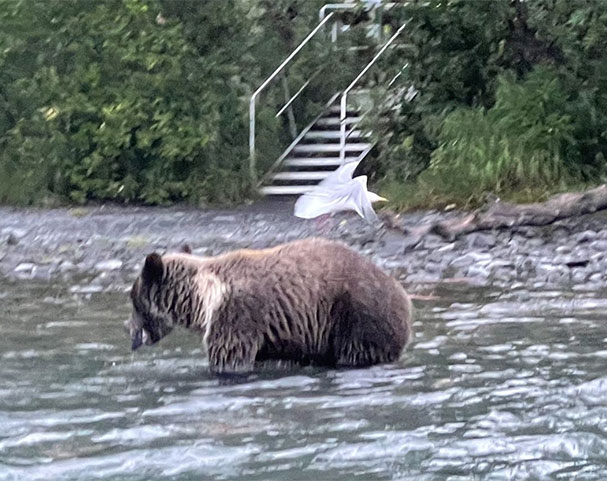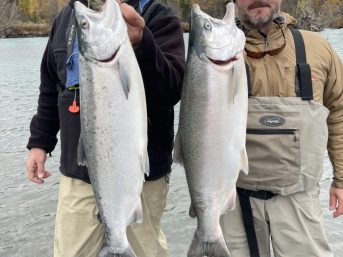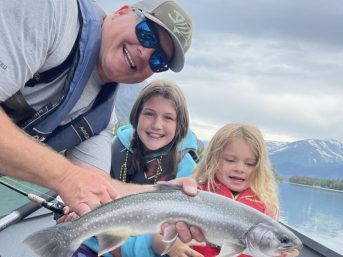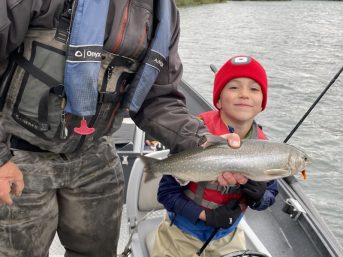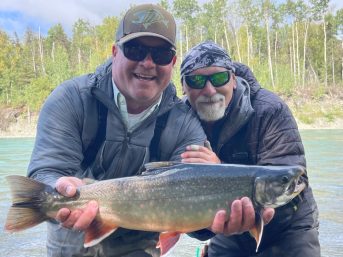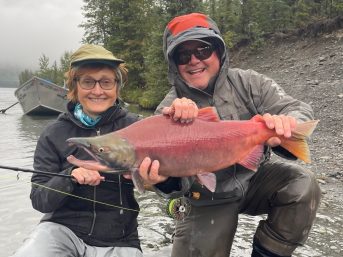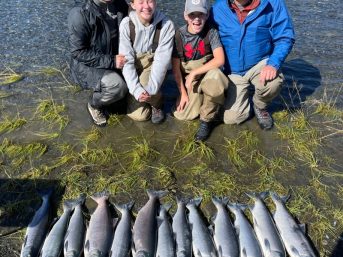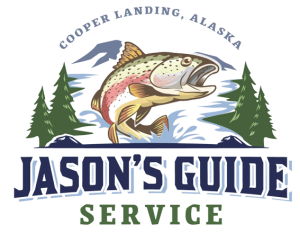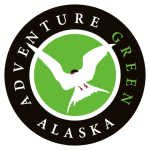As dawn breaks over the Kenai River, a thin veil of mist kisses the water’s surface. Beneath this serene façade, however, lurks a frenzied world waiting to explode into action.
In the delicate transition between water and air, a topwater dance is set to commence. Welcome to the riveting realm of surface fly fishing for rainbow trout!
If you’ve been aching for a Kenai River guided fishing trip where very cast is the prologue to a heart-pounding surface strike, you’re at the right place. It’s time for some topwater madness!
Join us as we explore the joy of surface fly fishing for rainbow trout on the Kenai River.
The Surface Drama
Fly fishing is an intimate communion with nature; think of it as a meditative dance with the currents. Topwater fly fishing, on the other hand, is a high-octane drama played out on the river’s surface. The water becomes a stage, and each ripple, splash, and swirl narrates a story of predator and prey.
Imagine the tranquil waters suddenly disrupted by the aggressive surge of a trout. Envision its silver scales glistening under the sun as it lasers in on the fly that skitters and dances provocatively on the water’s surface. This isn’t just fishing; it’s an orchestration of suspense and surprise.
Every cast in topwater fishing is an invitation to a duel. Armed with knowledge, skill, and intuition, the angler casts the fly. The trout, equipped with predatory instincts, evaluates and often accepts the challenge.
The ensuing chase is visceral. You feel your heartbeat sync with the ripples your fly makes. Every twitch increases the anticipation. And when the trout strikes, it’s an explosion of water and adrenaline.
For those few moments, the world outside fades. It’s just you, the trout, and the river’s heartbeat. One word. Magical.
Recommended Read: The Art of Fly Fishing on the Kenai River: Techniques & Strategies
Why Rainbow Trout?
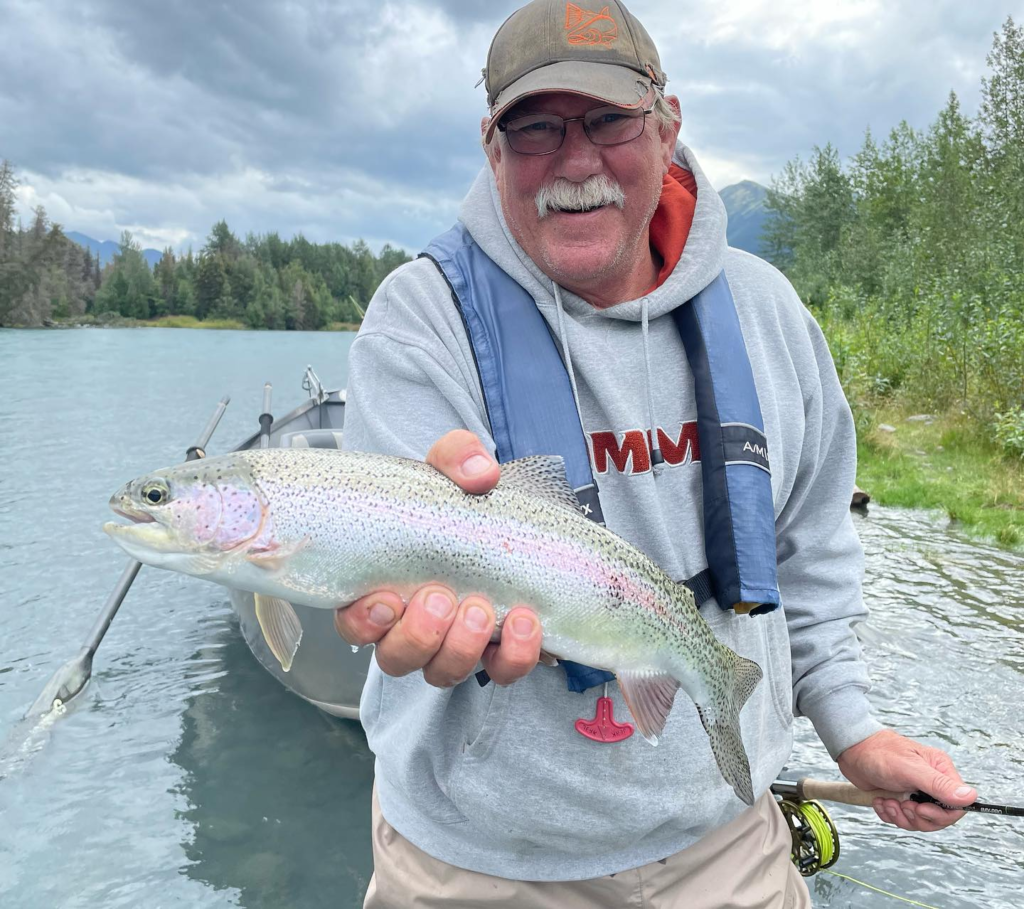
The fascinating rainbow trout isn’t just another fish; it’s an angler’s dream. Native to the cold waters of North America, rainbow trout are a spectacular fusion of beauty and brawn. Their iridescent skin, painted with a spectrum of colors, glints like a prism under the sunlight. They’re easily one of the most visually stunning freshwater species!
But it’s not just their appearance that mesmerizes; rainbow trout are renowned for their fighting spirit. When hooked, they display aerial jumps, lightning-fast runs, and dogged determination. This makes the pursuit all the more challenging and rewarding!
Their aggressive feeding habits, especially towards surface flies, further amplify the thrill of topwater fishing. Trout’s curious nature and voracious appetite for diverse prey (e.g., insects, crustaceans, smaller fish, etc.) mean they’re often on the hunt. This predatory behavior makes the surface drama so intense and captivating!
Tools of the Trade
The tools you choose can make all the difference between an ordinary day and an extraordinary one. The thrill of rainbow trout leaping out of the water to strike a fly is pure magic. But you can only experience this magic when you’re equipped with the right goods. What exactly are we talking about? Let’s dive in.
1. Fly Rods and Reels: When aiming for rainbow trout on the Kenai River, a 6 to 8-weight rod is usually your best bet. This provides a fine balance between sensitivity to feel the trout’s strike and the strength to reel in the more feisty ones. Match your rod with a smooth reel (preferably one with a reliable drag system).
2. The Flies: Surface flies are the stars of this show. Mouse flies, foam beetles, and stimulators are often irresistible to the Kenai River’s rainbows. Each mimics a potential meal for the trout, from hapless land creatures that have fallen into the water to aquatic insects in their adult phase. Always keep the current season and hatching patterns in mind when selecting a fly.
Line and Leaders: Floating fly lines are essential for topwater action. Pair your line with a tapered leader. The leader’s transparency ensures that the trout only sees the fly. The illusion will be perfected!
Recommended Read: The Best Time to Fish the Kenai River
Tips and Tricks for Maximum Surface Strikes
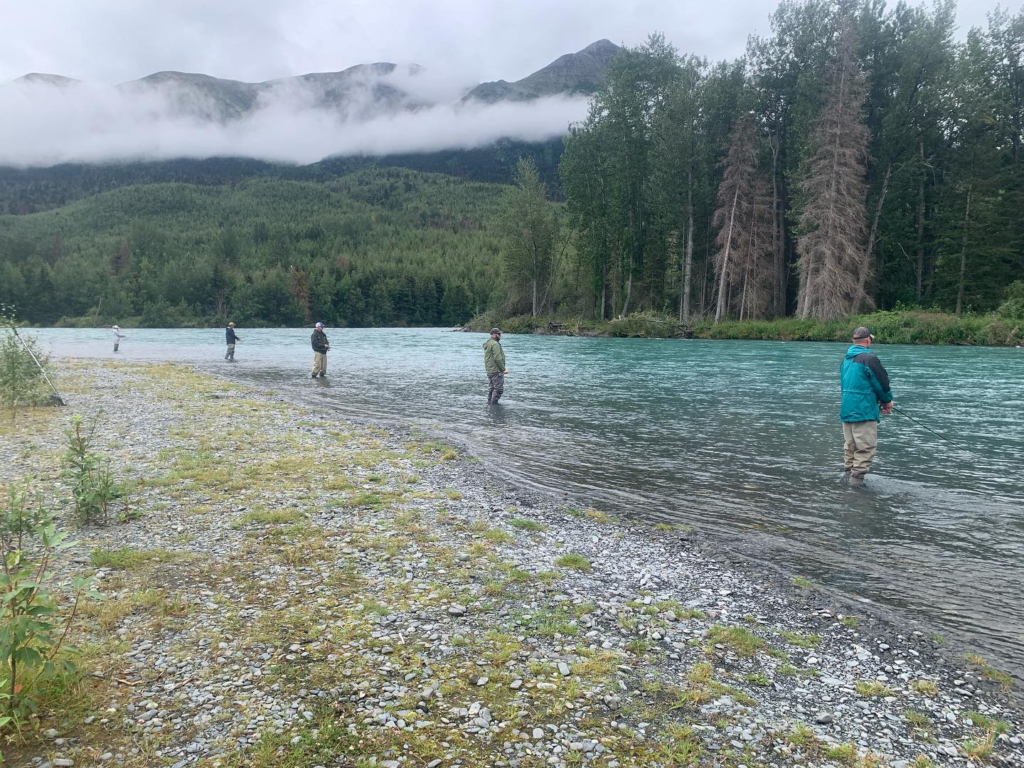
1. Time it Right: Just like humans, fish have their feeding schedules. The river’s surface comes alive in the wee hours of the morning and the gentle descent of dusk. At these times, insects are most active, making it a feeding frenzy for the trouts. Capitalizing on this natural rhythm increases your chances of a successful strike.
2. The Art of Presentation: Making the fly seem like a natural prey is an art. Too fast, and it appears unnatural; too slow, and it may not attract attention. Observe the natural movements of insects on the water. Your goal is to mimic that movement and make the trout believe it’s chasing real prey.
3. Patience is Key: Avoid jerking the rod immediately after seeing a splash. Trout often swipe at the fly or miss it on their first attempt. Waiting a heartbeat longer before setting the hook can make the difference between a successful catch and a missed opportunity.
4. Stay Stealthy: Your silhouette against the skyline or sudden movements can spook the trout. Wear clothes that blend with the surroundings, move slowly, and maintain a low profile to get closer to the action without alarming the fish.
5. Understand the Environment: Understand where rainbow trout are likely to feed. This will help you place the fly accurately. Look for calm pockets in streams, eddies beside fast-moving water, or the tail end of riffles. These are often the trout’s favorite hunting grounds!
6. Experiment with Flies: No single fly works universally. Switch up your flies depending on the season, time of day, and prevalent natural prey. Keep a varied collection and be ready to experiment.
Kenai River: An Angler’s Paradise
The Kenai River isn’t just another river; it’s a tapestry of sparkling waters, lush green forests, and a dynamic aquatic ecosystem. Stretching over 82 miles, this Alaskan gem is a haven for fly fishing enthusiasts. From its cerulean headwaters in the Kenai Mountains to the vibrant confluence where it meets the Cook Inlet, every bend and ripple of this river tells tales of ancient migrations, natural wonders, and angling adventures.
It’s not just about the catch; it’s about immersing oneself in the pristine beauty, feeling the rhythm of nature, and understanding the delicate balance of life. For an angler, the Kenai River is more than a fishing spot; it’s a dream, a pilgrimage, and a paradise.
Connect with Jason’s Guide Service
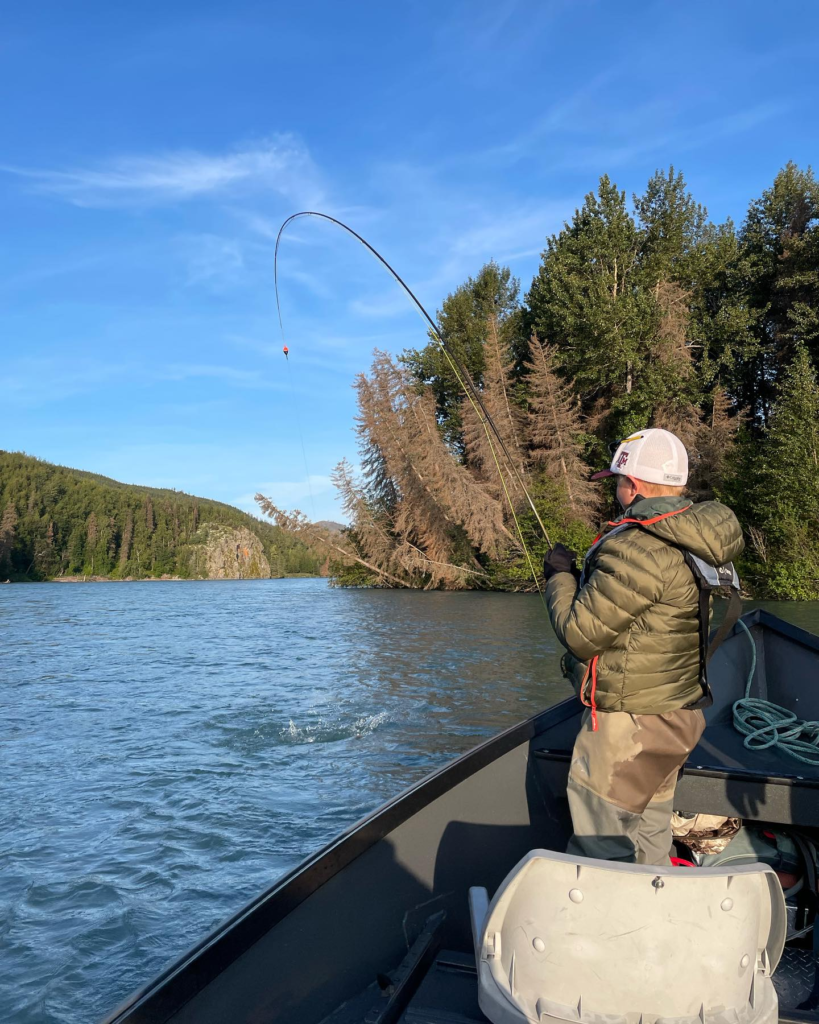
Are you ready to unlock the magic of the Kenai River? Jason’s Guide Service is your passport to an unparalleled fly fishing experience. With years of angling expertise and an intimate understanding of the Kenai’s waters, we promise the adventure of a lifetime.
Are you aching for a salmon fishing trip? Or perhaps you want to enjoy a guided rainbow trout trip on Cooper Landing. Walk us through your preferences and we’ll plan a customized adventure accordingly.
We believe fishing is more than a sport; it’s an art, a science, and, above all, a passion. From selecting the perfect fly and identifying the best spots to learning the trout’s behavior and teaching the nuances of casting, we offer a holistic angling experience. Our Kenai River fishing guides prioritize safety, respect for nature, and sustainability.
We’re ready when you are! An exciting Kenai River guided fishing adventure is right around the corner. Book now!

